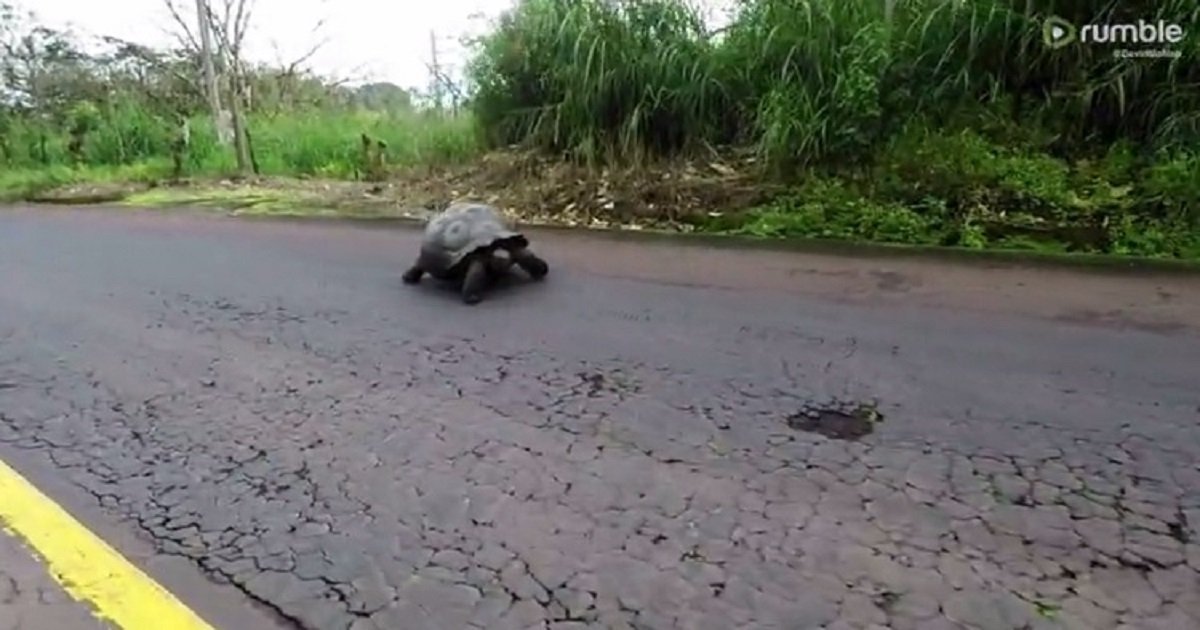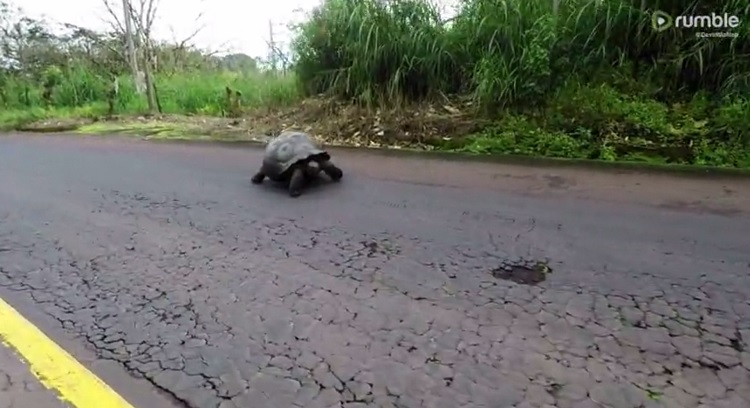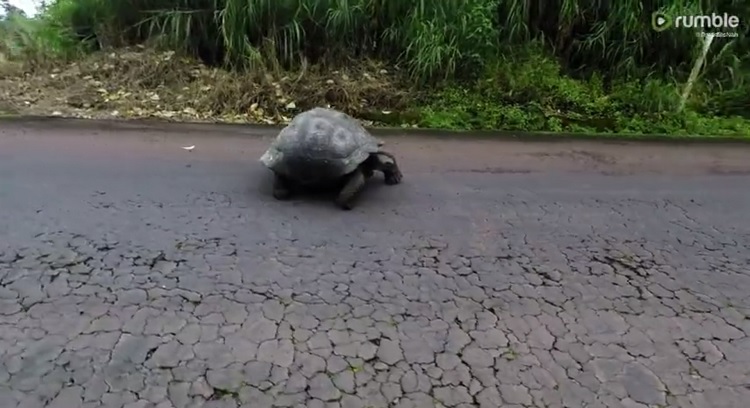Among all the many species of animals to be found in the Galapagos Islands, the giant Galapagos Tortoise is the most iconic among them.
With a length that can reach 2 m (6 feet) and weigh more than 230 kg (500 lbs), these tortoises are truly a sight to behold. Under ideal conditions, they can even reach 200 years of age.
But with this long life also comes an incredibly slow gait and when one of these mammoth creatures crosses a road, traffic jams can ensue.
Watch this giant tortoise take a stride alongside the road below.
[rumble video_id=v639qh domain_id=u7nb2]
Video credit: Rumble
The following video was taken on Santa Cruz Island as taxis bringing in tourists from the boats using the main road from the north side of the island to the town on the south side. Traffic slowed as the vehicles reached an area known to be heavily populated with giant tortoises. Sure enough, one of these majestic creatures could be seen regally walking along one side of the road which one of the tourists managed to catch it on video with a GoPro.
The Galapagos Islands residents are very serious about their responsibility to nature. They limit development even if it will impact their economic output and have strict rules when it comes to interacting with wildlife.
They don’t hesitate to respectfully make sure that newcomers are aware of and obey these same rules. For example, people are not allowed to get closer than 2m to animals. Many parts of the islands are designated national parks with only limited areas open to visitors.
The tourist who took the video asked in his best, but limited, Spanish if they should assist the turtle. The taxi driver replied that the turtle weighed too much to be moved without its cooperation which was highly unlikely. Besides, the drivers were being very careful. It would also be more stressful for the turtle to come into contact with people.
Most vehicles on the island are used in public transport. What few personal vehicles are present must be electric vehicles.
Several species of giant tortoise live on the islands. Due to over-consumption decades ago, most of these species have declined in population. The accidental entry of rats to the islands also played a part in the declining population.
But through heroic conservation programs and the perseverance of residents, the tortoise populations are slowly rebounding. In fact, some breeding programs made headlines abroad with many people cheering the revitalization of the tortoise population.
The tourists were lucky to catch sight of these tortoises in their natural environment. They even had a bigger bonus of observing one pair of tortoises mating in a remote location.
The Galapagos Islands are a testament to the hard work of its residents in preserving nature’s bounty.
Replaced!




